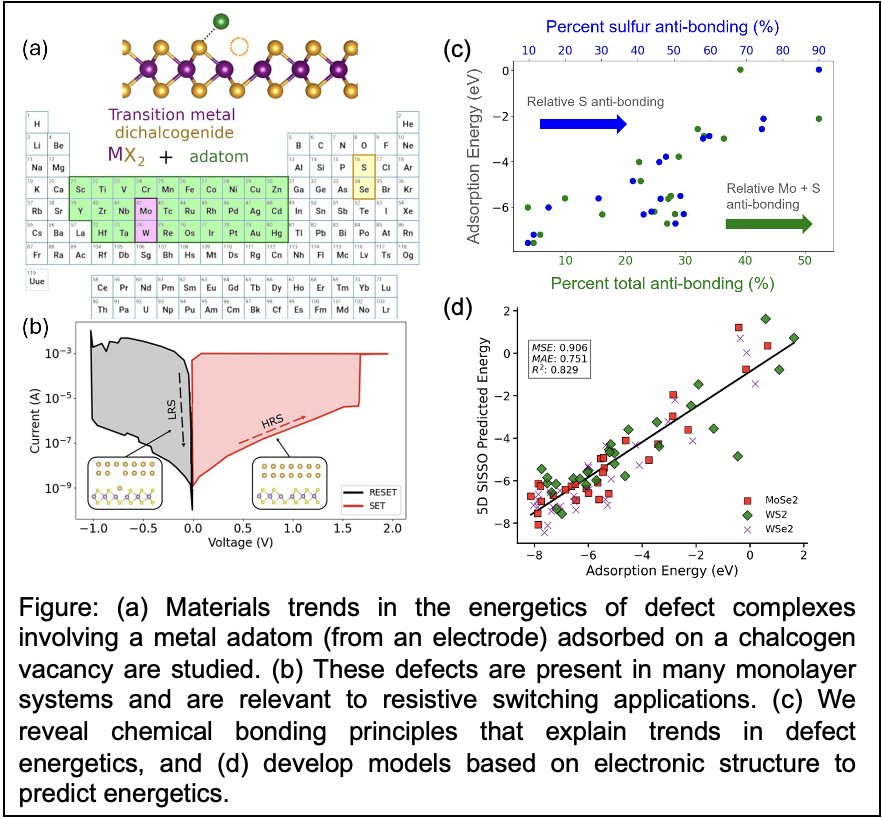Understanding & Predicting Trends in Defect Energetics in Monolayer Transition Metal Dichalcogenides
 What has been achieved?
What has been achieved?
- Developed models that predict and explain trends in the defect adsorption energetics for metal adatom adsorption in monolayer TMDs.
- These models are based on an understanding of changes in bonding character, hybridization, and electronic structure (e.g., d-band center).
- Our simpler and interpretable models perform comparably well to more complex machine learning studies.
Why is this achievement important?
- Demonstrate that materials trends exist in the defect energetics and hence switching energetics in resistive switching applications.
- Insights provide rational materials selection rules for materials in the active switching layer and the electrodes.
How is the achievement related to the IRG/MRSEC, and how does it help it achieve its goals?
- Provides framework for identifying materials trends at defective interfaces in heterostructures involving 2D materials
- Understanding defects in 2D materials is critical to their use and operation in electronic devices